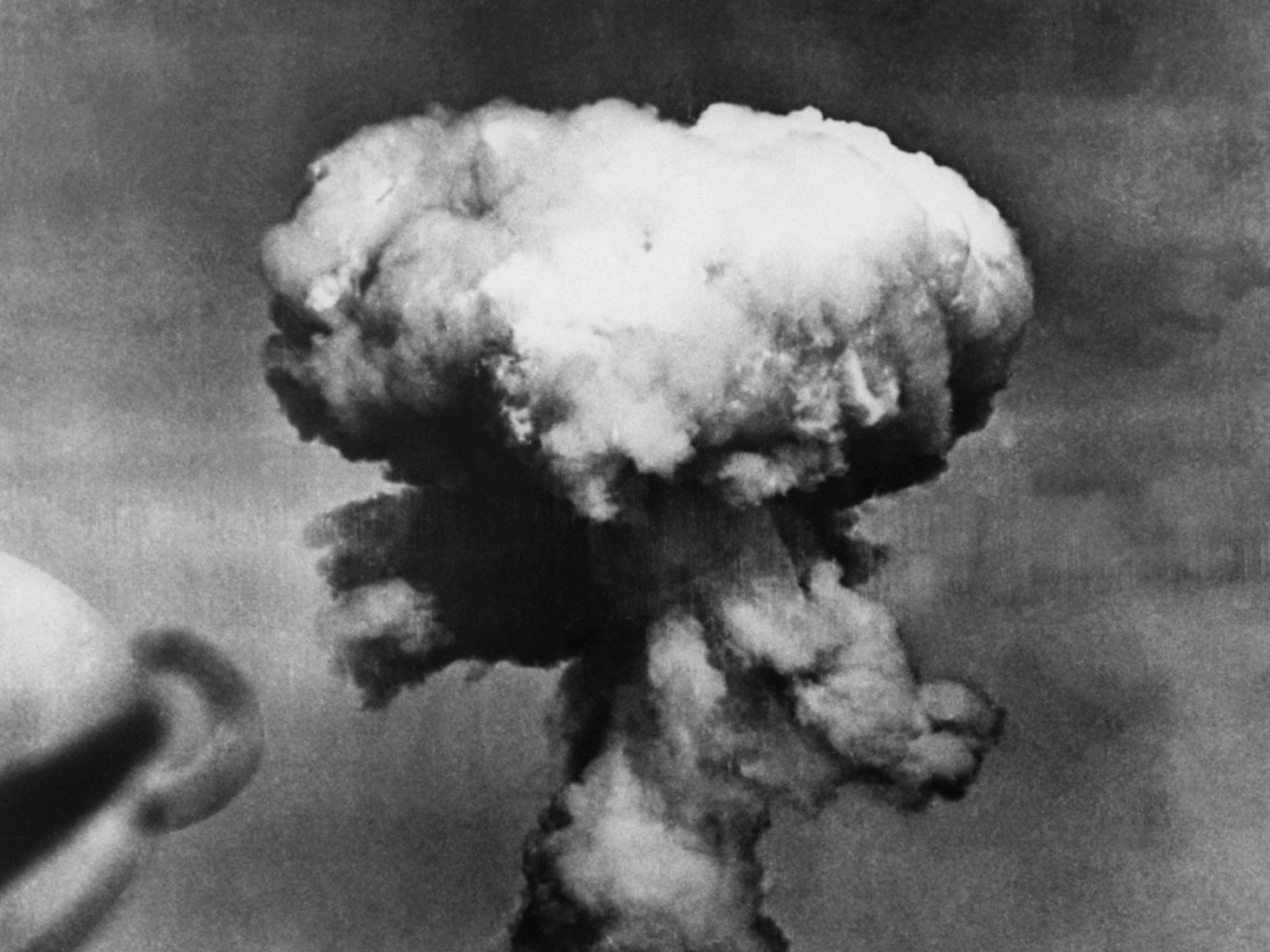
5 ways to mark the 75th anniversary of World War II’s end
From a Jewish resistance leader’s compass in Israel to a fortified island off France, artifacts and places recall a planet in conflict.
The planet’s deadliest conflict officially came to a close 75 years ago, on September 2, 1945, when Japan formally surrendered during a solemn ceremony in Tokyo Bay aboard the U.S.S. Missouri. Germany had signed an unconditional surrender document on May 7 of that year. Here are five ways to commemorate the end of World War II—while at home and on future travels.
Restored aircraft
The nonprofit Collings Foundation maintains a fleet of historic aircraft, such as the WWII-era Lockheed P-38 Lightning (shown above), that tours museums and air shows around the United States. For more than 30 years, its Wings of Freedom Tour has touched down at various airports to honor veterans and exhibit restored fliers. During these events, history buffs can even take the controls—along with an instructor—and soar into the skies aboard a P-51 Mustang fighter plane.
Island outpost
Hundreds of bunkers, tunnels, and other eerie remnants of Hitler’s defensive Atlantic Wall dot the Channel Islands, an archipelago in the English Channel off the coast of Normandy, France. On Alderney, visitors can see the observation tower called the Odeon and hike the Bibette Head Trail to explore some of the best-preserved German strongholds. A memorial pays tribute to the slave laborers, from places such as Poland, Russia, and Spain, who helped build the fortifications and died on the island.

Storied artifacts
At Jerusalem’s Yad Vashem, the World Holocaust Remembrance Center, learn about the Jewish partisans who carried out attacks on the Nazis in German-occupied Europe. Recent additions to the collection include a compass used by Jewish resistance leader Shlomo Brandt during covert operations run from a forest where he found refuge after fleeing the Vilna Ghetto, in what is now Lithuania. The center also houses a large online photo archive of Jewish life before, during, and after the war.

New book
Follow military historian Ian W. Toll on a deep dive into the final year of World War II in Twilight of the Gods: War in the Western Pacific, 1944-1945 (W.W. Norton & Company, July 2020). The last installment in Toll’s award-winning Pacific War trilogy uses firsthand accounts to detail the ferocious battles and high-stakes decisions leading to Japan’s surrender to the Allies.

Works of art
George Hoshida’s visual diary of drawings and watercolors captures a rare glimpse of life inside the U.S. internment camps where the Japanese-American artist was incarcerated during World War II. Hoshida’s family donated the roughly 260 original works and a separate Hoshida Papers collection containing correspondence, documents, and sketches to the Japanese American National Museum in Los Angeles. Because of its fragility, the artwork is exhibited only occasionally, but it can be seen online.

Related Topics
You May Also Like
Go Further
Animals
- Octopuses have a lot of secrets. Can you guess 8 of them?
- Animals
- Feature
Octopuses have a lot of secrets. Can you guess 8 of them? - This biologist and her rescue dog help protect bears in the AndesThis biologist and her rescue dog help protect bears in the Andes
- An octopus invited this writer into her tank—and her secret worldAn octopus invited this writer into her tank—and her secret world
- Peace-loving bonobos are more aggressive than we thoughtPeace-loving bonobos are more aggressive than we thought
Environment
- This ancient society tried to stop El Niño—with child sacrificeThis ancient society tried to stop El Niño—with child sacrifice
- U.S. plans to clean its drinking water. What does that mean?U.S. plans to clean its drinking water. What does that mean?
- Food systems: supporting the triangle of food security, Video Story
- Paid Content
Food systems: supporting the triangle of food security - Will we ever solve the mystery of the Mima mounds?Will we ever solve the mystery of the Mima mounds?
- Are synthetic diamonds really better for the planet?Are synthetic diamonds really better for the planet?
- This year's cherry blossom peak bloom was a warning signThis year's cherry blossom peak bloom was a warning sign
History & Culture
- Strange clues in a Maya temple reveal a fiery political dramaStrange clues in a Maya temple reveal a fiery political drama
- How technology is revealing secrets in these ancient scrollsHow technology is revealing secrets in these ancient scrolls
- Pilgrimages aren’t just spiritual anymore. They’re a workout.Pilgrimages aren’t just spiritual anymore. They’re a workout.
- This ancient society tried to stop El Niño—with child sacrificeThis ancient society tried to stop El Niño—with child sacrifice
- This ancient cure was just revived in a lab. Does it work?This ancient cure was just revived in a lab. Does it work?
- See how ancient Indigenous artists left their markSee how ancient Indigenous artists left their mark
Science
- Jupiter’s volcanic moon Io has been erupting for billions of yearsJupiter’s volcanic moon Io has been erupting for billions of years
- This 80-foot-long sea monster was the killer whale of its timeThis 80-foot-long sea monster was the killer whale of its time
- Every 80 years, this star appears in the sky—and it’s almost timeEvery 80 years, this star appears in the sky—and it’s almost time
- How do you create your own ‘Blue Zone’? Here are 6 tipsHow do you create your own ‘Blue Zone’? Here are 6 tips
- Why outdoor adventure is important for women as they ageWhy outdoor adventure is important for women as they age
Travel
- This royal city lies in the shadow of Kuala LumpurThis royal city lies in the shadow of Kuala Lumpur
- This author tells the story of crypto-trading Mongolian nomadsThis author tells the story of crypto-trading Mongolian nomads
- Slow-roasted meats and fluffy dumplings in the Czech capitalSlow-roasted meats and fluffy dumplings in the Czech capital



